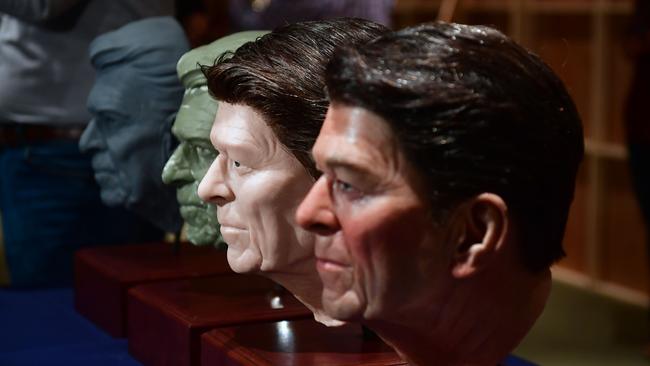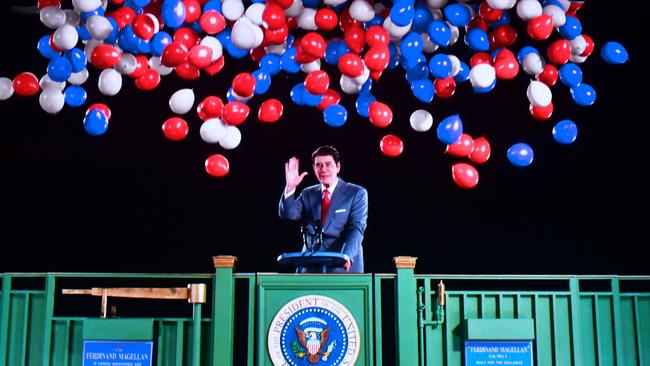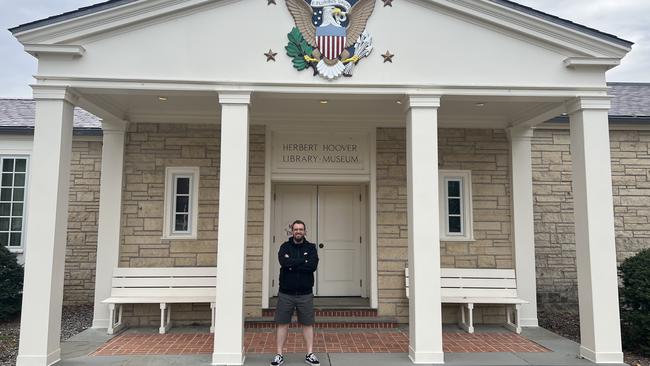Archival monuments to the most powerful office
We should do more to follow the US tradition of presidential libraries

While there is unlikely to be another face carved into the granite of Mount Rushmore – joining George Washington, Thomas Jefferson, Theodore Roosevelt and Abraham Lincoln – there will always be a presidential library and museum for former presidents that illuminate their lives, examine their records and burnish a legacy.
There are 13 official presidential libraries and museums chronicling the lives of every president from Herbert Hoover to George W. Bush, overseen by the US National Archives and Records Administration under the Presidential Libraries Act of 1955. Barack Obama’s library is under construction while Donald Trump’s is in development.
This month, I completed a 30-year quest to visit every presidential library and museum across the US, from California to New York and Texas to Michigan in between. Several have been visited two or three times, often with my wife and (now) teenage children in tow.
How could they not be dazzled by the grandeur of presidential history writ large with these towering figures and their pathways to power, ambitions and struggles, triumphs and tragedies, hopes and disappointments, and their attempts to singularly shape their country and the world?
Presidential libraries and museums are political Disneyland. Who would not want to sit behind the Resolute Desk in a replica Oval Office or pretend to chair a meeting in the Cabinet Room? Or board Air Force One at Ronald Reagan’s library or recreate Richard Nixon’s two-handed V-for-victory salute on the steps of Marine One? Or get up close to a presidential limousine – “the beast” – located at several libraries?

Harry Truman maintained a private office at his library for years and you can now peer into the window behind his desk and see it as it was when he was sitting there. At Hoover’s library, you can look into his recreated Waldorf Astoria Hotel suite in New York where he spent his post-presidential years. George HW Bush’s library has recreated his office from the Camp David presidential retreat.
Wondering what it is like to send forces to war? When the Situation Room at the White House was remodelled during George W. Bush’s presidency, the old one was kept and later installed at his library in Dallas, Texas. It now serves as a meeting room. At his interactive “Decision Points Theatre” you can play president and decide whether to send further troops to Iraq or how to respond to Hurricane Katrina.
The US presidency is the most powerful office. The 45 men who have occupied it include some of the greatest leaders in the history of the democratic world, from Washington to Lincoln and Franklin Roosevelt, who remain unchallenged as the truly great.
Presidential libraries serve as a window into executive leadership, the times in which they governed and the challenges they faced.
They are both archives and museums, with a focus on a presidential life and times. Franklin Roosevelt established the first such public repository, raised private funds for its construction on his Hyde Park estate in New York, and left it to the National Archives. He inaugurated a tradition. The Truman library was the first established by a former president, in 1957. His voice still greets you when you enter the recreated Oval Office.
It is thrilling to sit in the research rooms and leaf through pages of historical documents, some handled and signed by presidents and their staff. They also collect sound, photographic and film records along with a president’s personal belongings such as suits worn at inaugurations, childhood toys, schoolbooks, furniture and political memorabilia.
These institutions are usually publicly funded with private donations. NARA oversees the collation, preservation and access to official papers. The museum components are usually run by a foundation, and presidents and their families oversee construction and fundraising. Several libraries have partnerships with or are located on university campuses. The Nixon library became part of NARA in 2007.
Dwight Eisenhower has his library and museum uniquely located in two separate buildings opposite each other in Abilene, Kansas. Gerald Ford has a presidential library located on the campus of the University of Michigan, his alma mater and congressional district, and a presidential museum in the bustling city of Grand Rapids.
These libraries are often situated next to or near presidential homes, which can also be toured. They are the burial place for many presidents and first ladies. They provide an opportunity to get up close to a president and better understand them personally, their careers and the issues they grappled with while in the Oval Office.

Presidents have often played a role in their construction and operation. They speak at conferences, give lectures and welcome honoured guests. Presidents usually attend the openings of their successors’ libraries and visit for special events. Truman and Hoover were close, like Ford and Jimmy Carter, and Bill Clinton and the Bushes.
Lyndon Johnson’s library is at the University of Texas, next to a football stadium. Eager to boost visitor numbers, he persuaded the stadium to announce at halftime that there were plenty of bathrooms at his library with no lines, knowing they had to walk through a turnstile to get to the bathroom, chalking up library visitors.
Truman liked to greet visitors to his library, posed for photos and signed autographs. George HW Bush had a private apartment adjoining his library in College Station, Texas, for when he was visiting. Carter’s library is located with the Carter Centre in Atlanta, Georgia, which has done good works around the world supervising elections, building homes and eradicating disease.
The best presidential library is undoubtedly Truman’s in Independence, Missouri. It has recently been extensively renovated. It is the most interactive with audiovisual displays, games to play, buttons to push, draws to open, levers to pull and immersive segments alongside archival documents and artefacts. Like the Ford and Carter libraries, it showcases the man as much as their presidency with their integrity shining through.
The Hoover (West Branch, Iowa), Eisenhower and George HW Bush libraries have a large focus on their extraordinary pre-presidential careers. The Reagan library (Simi Valley, California) enables visitors to track his journey to the presidency; my daughter acted alongside “the Gipper” in one of his B-grade movies while my son recreated his call of a baseball game.
The Kennedy (Boston, Massachusetts) and Nixon (Yorba Linda, California) libraries superbly focus on the big foreign policy issues of their presidencies such as the Cuban missile crisis and the opening to China. The 1960 election is brilliantly recreated in Boston, with mock-ups of the Democratic convention, a campaign office and the Kennedy-Nixon debates.
The Johnson library demonstrates how he wielded power as a senator and president, and you can listen to secret recordings as he applies “the Johnson treatment” to get his way.

At the Nixon and Reagan libraries, you can call up their diaries and notes on a digital touchscreen. Each library also spotlights the role of first ladies, and at the Johnson library you can view Lady Bird’s office as it was when she died in 2007.
While on the whole, presidential libraries faithfully chronicle, explain, analyse and interpret their namesakes’ life and legacy, there are gaps. The Truman and Nixon libraries are probably the most honest. Truman’s political advancement by the corrupt Missouri Pendergast machine is acknowledged. The Watergate gallery at the Nixon library was recently overhauled by historians without interference from his family or former staff.
The John F. Kennedy library makes no mention of his serial philandering. I found no reference to Reagan’s first wife, Jane Wyman, at his library, which perhaps reflects Nancy’s oversight. Clinton’s library (Little Rock, Arkansas) does not shy away from his affair with Monica Lewinsky but presents it as part of a conspiracy propagated by political opponents.
Overall, presidential libraries and museums are hugely valuable and important for the study of leadership, politics and decision-making in government. Reagan said they serve as “classrooms of democracy”. They are often busy with students rubbing shoulders with tourists of all ages from around the world.
Australia has libraries and institutes dedicated to prime ministers such as John Curtin, Robert Menzies, Gough Whitlam, Bob Hawke and John Howard. But we need more, and they should be co-ordinated and supported by governments and supplemented with private funding. These archives and museums also host conferences and events on politics and leadership, which serve the public interest.
Having also visited Mount Rushmore in the Black Hills of South Dakota earlier this month, I can confirm there is space for one more president. But as we are unlikely to see a fifth face added, former presidents will have to settle for their own library and museum as their defining monument. They are all worth visiting. After all, the presidents are expecting you.


The arc of presidential history has several phases: from the promise of a candidacy and the optimism that follows their election to the testing and trials of office, the instant evaluations of their successes and failures, and the never-ending debate about their place in the American story.